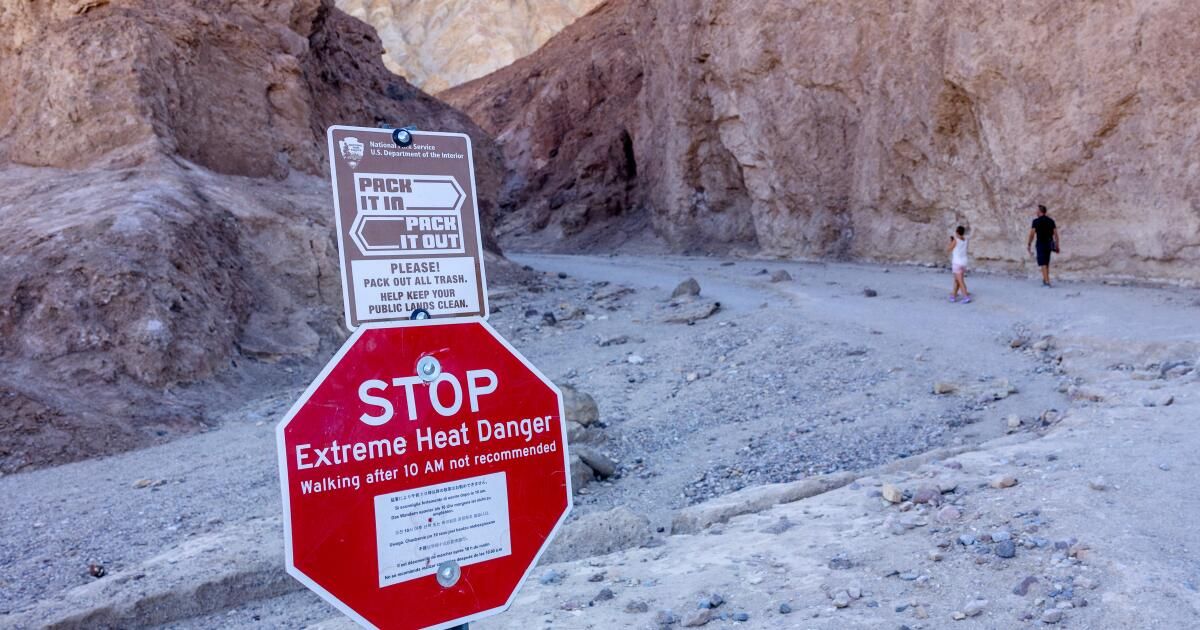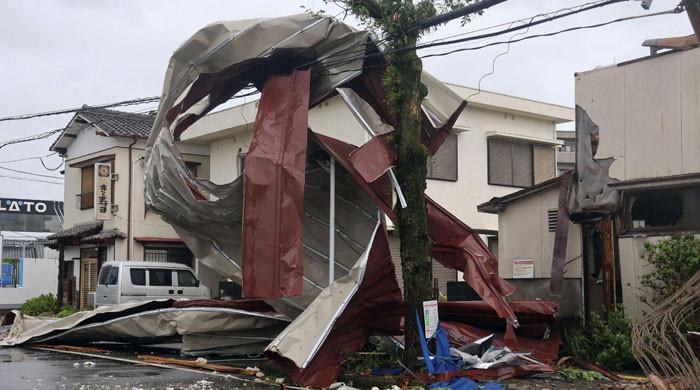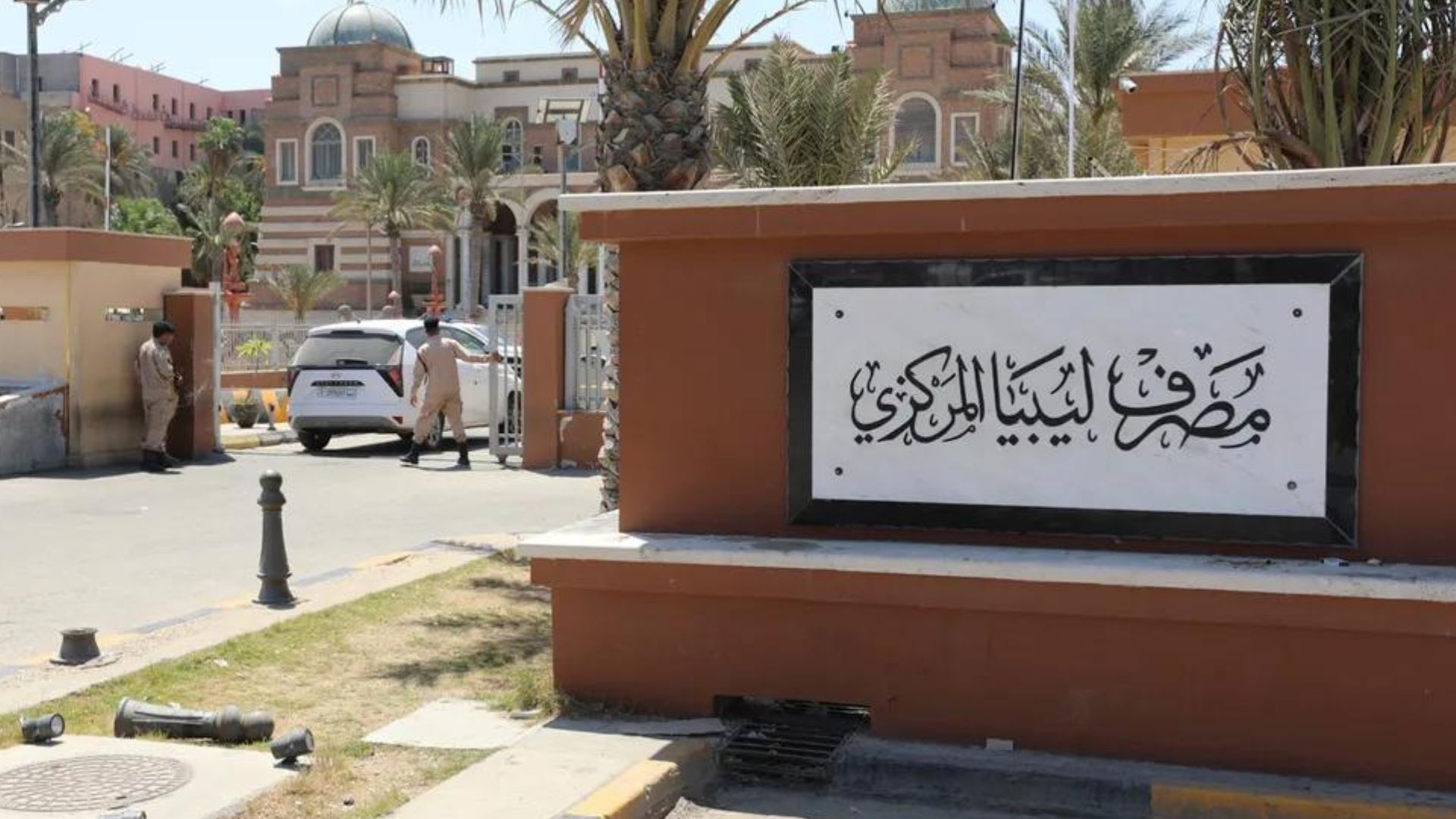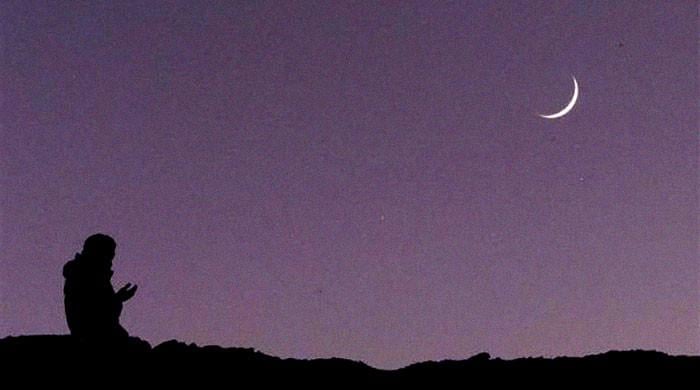If you had looked at a temperature map this week (it doesn't matter much what day it was), you would have seen bright red stretching from Baja California to Canada's Northwest Territories.
A sweltering heat enveloped the West Coast for an entire week in places separated by more than a thousand miles, and set an all-time temperature record of 124 degrees in Palm Springs. Death Valley, home to the highest temperature on record in the world, came close to reaching its own record, as thermometers registered a temperature of 128 degrees for several days in a row.
And all of this comes just a month after an earlier heat wave sent temperatures in the Central Valley into the triple digits before summer officially began, raising the question: What's causing all this extreme heat?
The direct source of almost all heat waves is a high-pressure system in the upper atmosphere, which has several effects. First, high pressure suppresses cloud formation, meaning that the bright midsummer sun can quickly warm the ground throughout the day. And second, this high pressure acts as a lid, preventing warm air from rising by convection as it otherwise would.
Aggressive and shocking reports on climate change, the environment, health and science.
This phenomenon is sometimes described as a “heat dome,” which, while not a scientific term, helps illustrate how warm air can become trapped at the surface by the high-pressure “dome” above it. Sometimes, as is happening across the West Coast, the heat dome can become stuck in place due to interactions with nearby pressure systems, extending the heat wave and making it much more threatening to human health.
Of course, in the 21st century, every heat wave is also caused, at least in part, by climate change. In the past, the same clear skies that let in sunlight also allowed heat to escape at night in the form of infrared rays, leading to cooler temperatures at night.
Now, the greenhouse gases humans have emitted over the past century act as a kind of second thermal dome, except that instead of blocking convection, they suppress radiation. As you might expect, the result is even higher temperatures, since the two main methods of heat transport in the atmosphere are impeded.
The increase in heat wave danger is not occurring equally across all regions: in the hot, dry conditions of the American Southwest, heat wave intensity and frequency are increasing especially rapidly. There is also an asymmetry between day and night: Summer minimum temperatures have risen more than twice as fast as maximum temperatures over the past 50 years. This pattern is particularly concerning because nighttime temperatures above 80 degrees are one of the best predictors of heat wave mortality, in large part because hot nights disrupt the natural cooling process during sleep.
Equally worrying is that heat waves appear to be becoming not only stronger but also longer lasting.
Scientists have proposed several causes for this phenomenon, including changes in the El Niño oscillation and decreases in the amount of heat being exported to the ocean surface. These longer heat waves increase the danger not only of heat stroke, but also of wildfires. A key indicator of extreme fire danger is when the temperature (in degrees Celsius) is greater than the percentage of relative humidity — a threshold that was surpassed in Santa Ynez just as firefighters were struggling to contain the lake fire Monday afternoon.
Warm air, and especially warm, dry air, increases the risk of wildfires because it can hold more moisture, which increases the amount of evaporation that can occur. When evaporation demand increases, many plants can't keep up because their tissue begins to dry out. And as anyone who has built a campfire knows, dry wood ignites much faster than wet wood, because the fire doesn't need to expend its energy evaporating water into steam.
What’s more, prolonged heat waves also increase the risk of even larger fires in the future. Trees, already stressed by drought, are pushed to the limit by several days of intense heat, which can lead to “hydraulic failure” when air bubbles form within the tree’s vascular tissue, ultimately killing it. When these mass die-offs occur, they create huge swaths of dead, flammable wood that are ripe for burning in the following fire season.
Even as the current heatwave nears its expected end, we must do what we can to prepare for (and, to the extent possible, postpone) a future with more events like this.
Extreme heat brings with it a diverse set of problems that require a constellation of solutions, but luckily there are plenty of groups stepping up: Los Angeles County has an interactive online map listing the schedules of 171 cooling centers, the U.S. Forest Service oversaw record amounts of prescribed burns in California last year to clear brush and dead vegetation, and California’s climate bond (if passed) would allocate $450 million toward extreme heat mitigation.
Unfortunately, even the best intentions aren’t always enough: For example, the Forest Service was forced to postpone the Tanbark prescribed burn near Glendora several weeks ago because of worsening environmental conditions. The climate bond was necessitated, at least in part, by the fact that nearly $3 billion in climate funding is likely to be cut from California’s budget because of shortfalls, and a report released in March suggested the state would need to nearly triple its rate of emissions reductions to meet 2030 targets set by state law.
As the heatwave has made clear, there is much work to be done to help society adapt to climate change, and we are running out of time to do so.
Ned Kleiner is a scientist and disaster modeler at Verisk. He has a doctorate Bachelor of Science in Atmospheric Sciences from Harvard University.












